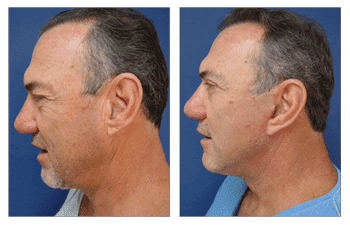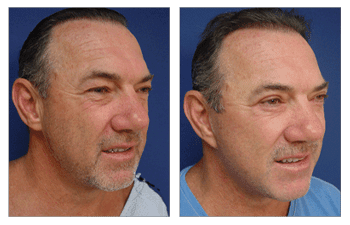


74-year-old male who was mindful of his facelift will get the best facelift results With proper facelift preparation, you can appreciate why this 74-year-old male from Laguna Beach achieved excellent results only three months following upper and lower eyelid surgery and face and neck lift. When a patient decides to go forward with their facelift operation, there is a lot more that goes into the process than just showing up and going under anesthesia.
A Facelift Preparation Introduction
Facelift preparation helps doctors plan the procedure and reduces the anxiety of patients desiring a facelift. Cosmetic surgery patients interested in facelift surgery universally express less stress by taking precautions ahead of time to eliminate any unnecessary risks to facelift surgery ahead of time.
Preparation to avoid Hematoma
A hematoma is the most frequent complication of facelift and occurs in less than 5% of cases. As such, it is prudent to take all precautions to avoid a hematoma.
Avoid Blood Thinners
Generally, the most common problem after getting a facelift is a hematoma caused by blood thinners (such as fish oil and aspirin) and not taking your blood pressure meds. A couple of ways to avoid this complication following a facelift procedure is to stop taking blood thinner medications, such as anti-inflammatory drugs or certain herbal supplements, at least one month before surgery. It is prudent to measure your blood to ensure that your blood clotting ability is normal by getting your lab testing ahead of time.
Managing Blood Pressure Medications
If you are on blood pressure medications, you should ensure that you are compliant with taking your medications not only throughout the weeks before surgery and the night before surgery but also on the day of surgery and for at least two weeks after surgery. This is because the elevation in blood pressure will augment the blood flow to the face and potentially knock off cauterized blood vessels, causing unwanted oozing following your surgical procedure. Developing a hematoma after surgery may require returning to surgery, prolonging your recovery process.
Complying with Pain Control
Additionally, taking pain medications postoperatively is critical to avoid a hematoma. This is because uncontrolled pain will result in higher blood pressure. Taking pain-relieving medications will avoid the unnecessary strain that may increase blood pressure.
Facelift Preparation Summary
In conclusion, facelift preparation is one of the most important steps taken by patients interested in cosmetic surgery for a seamless operation and tolerable recovery period.
Although some doctors may have different preparation sets or requirements, they all agree that facelift preparation is crucial to surgery. At SurgiSculpt, the preparation needed for facelifts and other procedures is taken very seriously. If you are interested in a facelift surgery, please contact our center to set up a consultation.

